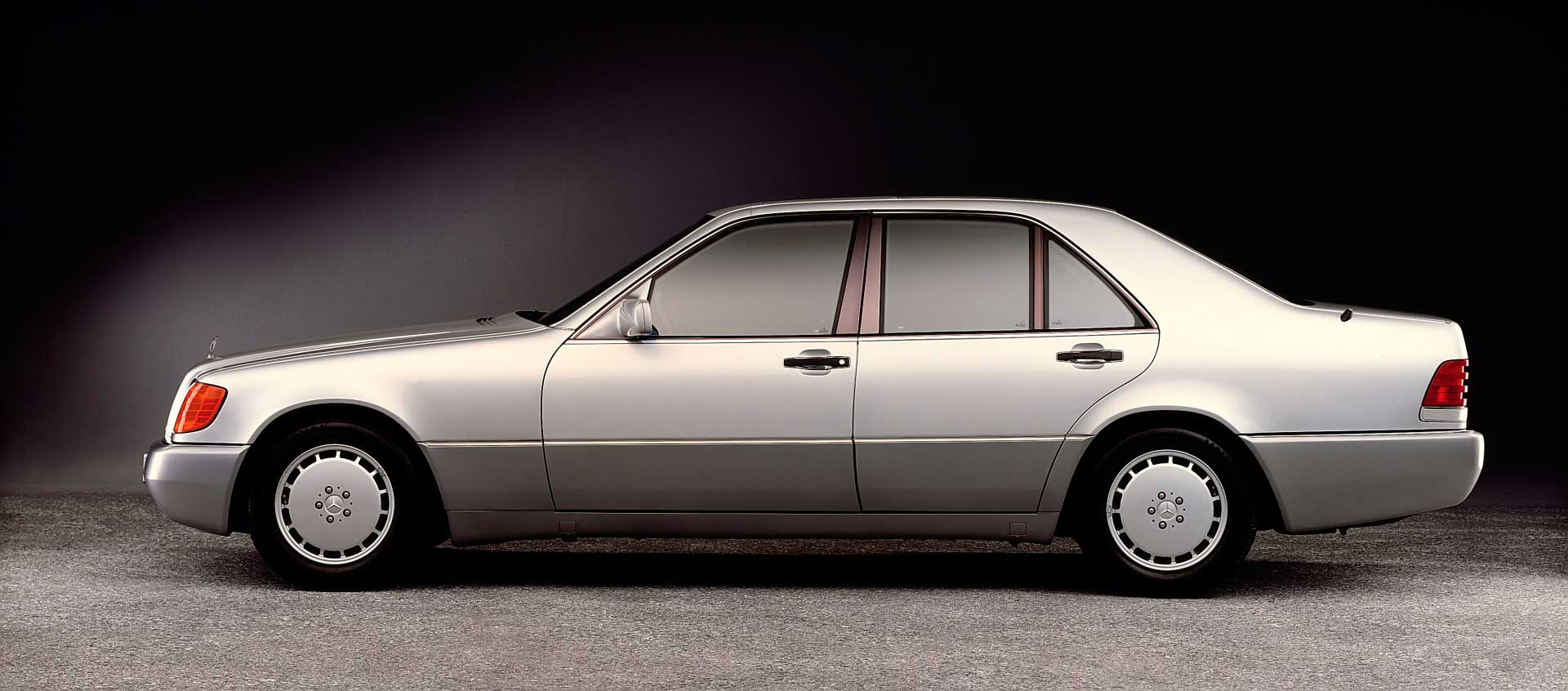
Do you remember the 1991 W140 S-Class? The mighty W140 is generally considered to be one of the finest cars ever made, and it’s often said to be the last model to embody Mercedes’ uncompromising old-school engineering-led approach to product development. But this mostly magnificent Merc also harvested a fair amount of criticism alongside the praise. Its imposing slab-sided styling seemed to owe more to Germany’s long and successful tradition of armoured vehicle manufacture than any known school of car design. Famously too big to fit on German railway wagons designed to transport more ordinary vehicles, the extravagant 1991 S-Class was criticised above all for its weight. But a lot has changed in the 33 years since the W140 appeared – and not all of it for the better. Today, even compact electric SUVs, like the popular Skoda Enyaq, weigh getting on for two tonnes – about the same as the heavy old W140 – and nobody bats an eyelid. What was once exceptional has become the norm.
But it didn’t have to be this way. In fact, ten or fifteen years ago, it looked as though EV design might take a completely different turn. Lightweight innovative vehicles designed to eke out every last mile of range out of each expensive kWh of battery capacity were everywhere. The first electric vehicle I ever drove, almost twenty years ago, was the tiny Piaggio Porter Electric, a converted Daihatsu Hijet van. The first electric car I tested, a few years later, was the super-small, but space-efficient, four-door Mitsubishi i-MiEV. Then there was the little electric smart fortwo and the Renault Twizy, as well as Toyota’s innovative three-wheeled i-Road and slightly larger four-wheeled COMS. BMW came up with the brilliant i3, probably the first fairly affordable production car making extensive use of super-strong weight-saving carbon fibre in its construction. Even the first two mainstream mass production EVs, the Nissan Leaf and the Renault Zoe were compact hatchbacks.
So, what happened? I think declining battery prices took the pressure off the manufacturers to save weight. Rather than reinvent the car to shave off a few pounds, which is one of the harder ways of increasing range, they went down the easier path of just adding increased battery capacity to cars of more conventional design. After reaching into the future with the i3, BMW adopted less adventurous designs like the i4. The i-MiEV faded away, and most notably of all, smart replaced its lightweight microcars with the electric #1 model, which tips the scales at between 1.8 and 1.9 tonnes, depending on the trim level chosen – not much lighter than the base version of the Mercedes-Benz W140 that was so widely criticised for its excessive bloat all those years ago. Of modern EVs, only the Citroën Ami really maintains the spirit of the pioneering minimalist designs.
I recently posted a few photographs of some of those early lightweight electrics on Mastodon (it works rather like Twitter, except that people are nice to each other), and I was surprised by the positive response. There was even a degree of nostalgic affection for the much-derided Sinclair C5 when I posted a picture of that. One theme – the Mastodonians who discussed the posts generally really liked lightweight designs like the Twizy and the i-Road, but raised concerns about driving such vehicles in modern traffic with big SUVs and the like. And that seems to be a real obstacle to change, which may only be overcome when electric scooters, trikes, i-Road-like three-wheelers, and the like get their own dedicated infrastructure, because they don’t fit naturally onto either roads or pavements, or even purpose-built cycling infrastructure.
But there is another way of looking at this. Let us return to the comparison between the W140 Mercedes-Benz S-Class and the Skoda Enyaq that I made at the beginning. Back in 1991, nobody would have expected that Skoda, then managing the transition from the Estelle to the Favorit, would ever make a car in the same weight bracket as the Mercedes-Benz W140. But on the other hand, nor would anyone have expected that Skoda would one day make a car as good as the Enyaq, which, thanks to electrification, offers the sort of refinement, performance and technology that were previously the preserve of top luxury motors like the S-Class. Maybe all that weight isn’t such a bad price to pay for that degree of progress.
© Motorworld Media 2023
Registered Office: 4 Capricorn Centre, Cranes Farm Road, Basildon, Essex. SS14 3JJ
Company Number: 8818356
Website designed by Steve Dawson